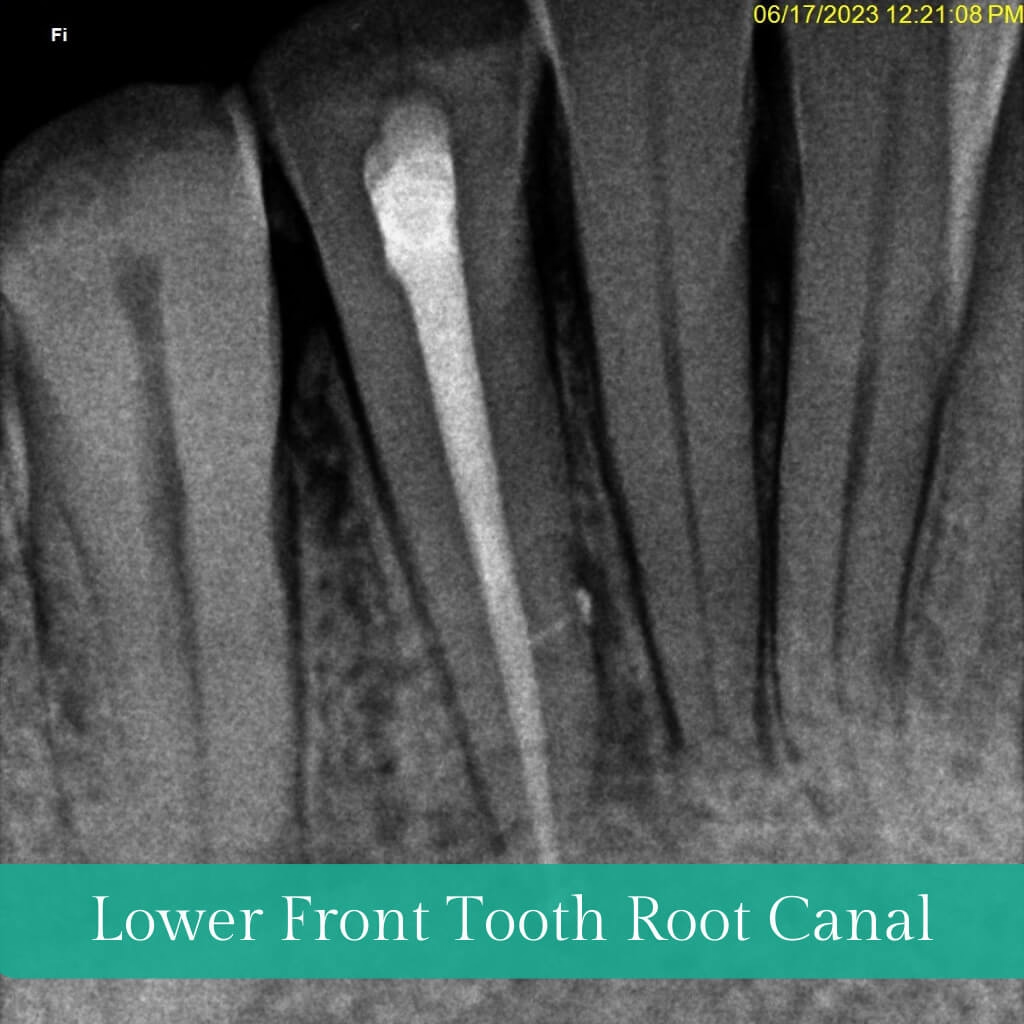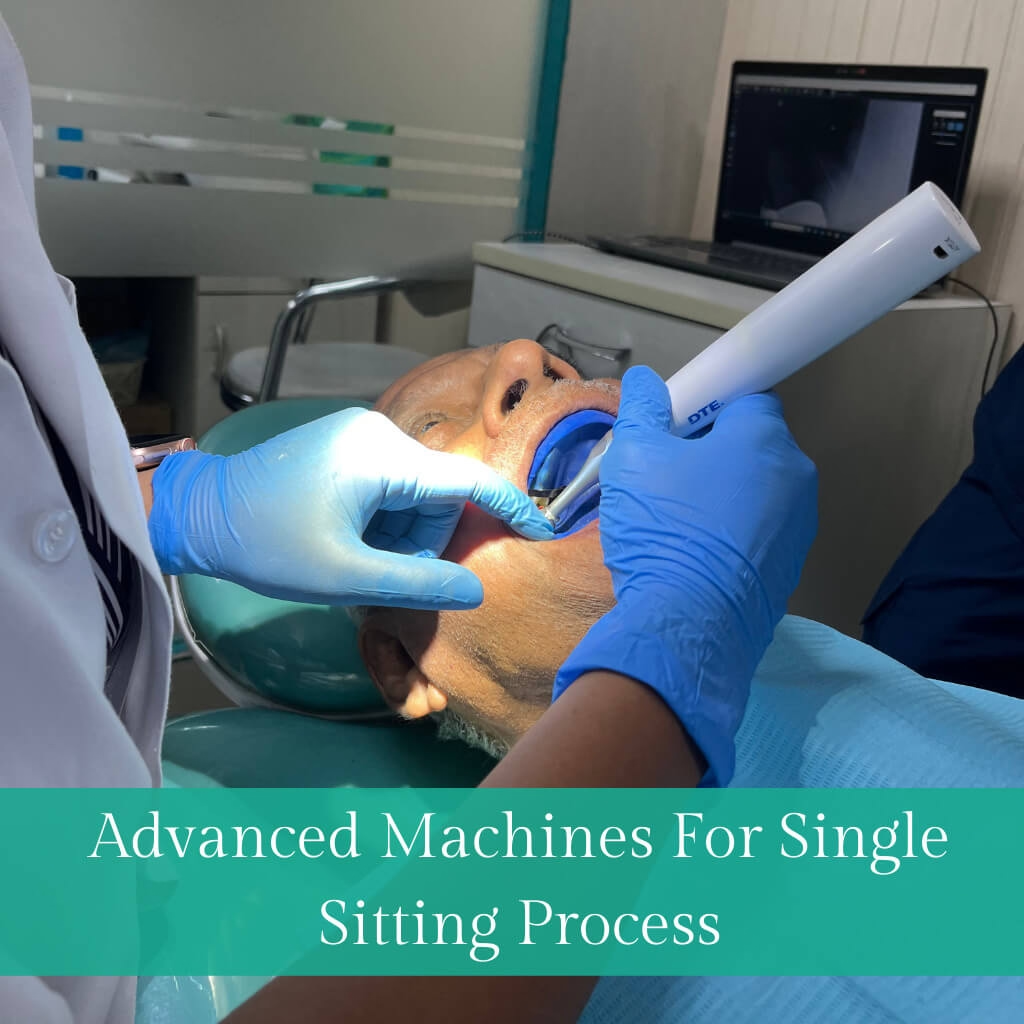RCT is a painless procedure - fact or fiction?
Have you heard the myth that root canals are incredibly painful?
Good news, the answer is a resounding 'No!' With modern technology and anaesthetics, root canals can be surprisingly comfortable.
Let's look at the key factors that make your Root canal or RCT experience a cakewalk!
Key Takeaways
- Root canal treatment is a painless experience with modern techniques, technology, and skilled doctors.
- Local anaesthesia is used during the procedure to numb the area and reduce discomfort.
- Sedatives may be administered to reduce anxiety during the root canal treatment.
- Discomfort post-procedure is minimal and manageable with analgesics and anti-inflammatory drugs.
Is Root Canal Treatment Painful?
No, it is not painful!
Root canal treatment, often abbreviated as RCT, is a dental procedure aimed at removing infected or damaged tissue from within your tooth. It involves removing the decayed and necrosed pulp tissue from your tooth to render it healthy and pain free.
It can be painful if done incorrectly, but modern techniques and technology make it possible to have a painless experience when performed by a qualified dentist.
Thedentistmust dedicate sufficient time to ensure thorough removal of all infected tissue and secure proper sealing of the nerves. With the right technique and tools, you can have a root canal treatment that's absolutely painless.
How is Pain Managed During a Root Canal?
Root canals can be completed successfully and without pain with modern local anaesthesia. A local anaesthetic is used to numb the tooth being treated and the area around it and eliminate any sensation or discomfort during the procedure. Specialized instruments are used to carefully work around the root canals.
The latest pain management techniques make procedures virtually painless and often require only one appointment. In some cases, sedatives may be administered to reduce anxiety and make the procedure more bearable.
With the right techniques and technology, a painless root canal treatment is now a reality.
Do Dentists Use Anesthesia for Root Canals?
The answer is yes. Dentists do use anaesthesia for root canals to ensure the patient experiences minimal pain during the procedure.
Before a dental procedure, the dentist will apply local anaesthesia to the affected tooth and its surrounding area to prevent any pain or discomfort during treatment. This anaesthesia keeps you comfortable and pain-free throughout the procedure, allowing the dentist to work on the tooth's interior, remove the infected or damaged pulp, and clean and seal the root canals effectively.
In some cases, sedation options like nitrous oxide or oral sedatives may also be available to help patients with dental anxiety or extreme discomfort relax during the procedure.
Is Discomfort Normal After a Root Canal?
Root Canal procedures effectively treat infected teeth and prevent extraction. Although some discomfort is normal after the procedure, it should be short-lived and not cause any major issues.
You may experience some sensitivity, particularly when eating or drinking hot or cold beverages or feel pressure or slight discomfort during the procedure. This should subside after a few days and can be managed with the help of analgesics and anti-inflammatory drugs.
If the discomfort persists, it's important to contact your dentist for further advice and treatment.
Can Medication Help Post-Root Canal Discomfort?
Medication can serve as an effective means to alleviate post-root canal discomfort. Ibuprofen or acetaminophen can be taken for pain relief, while anti-inflammatory drugs can be taken for further relief.
To minimize discomfort, it's important to follow the post treatment instructions given by your doctor, as well as avoid hard and sticky food items. Instead, stay on a soft food diet and drink plenty of fluids.
What's the Typical Recovery Time After a Root Canal?
The typical recovery time after a root canal procedure can vary from one individual to another, but many people experience relief from the pain and discomfort associated with the infected tooth shortly after the treatment is completed.
In the days following the procedure, it is common to encounter mild discomfort, which can typically be relieved with over-the-counter pain medications. Full recovery typically occurs within a few days to a week, and during this period, it is crucial to adhere to any post-treatment instructions provided by your dentist.
Are There Modern Techniques to Minimize Discomfort?
Root canal treatment is painless due to modern techniques that minimize discmfort. Pain relief is achieved through the combination of local anaesthetics and sedation to ensure comfort during the procedure.
To reduce the discomfort of a Root canal treatment, here are three methods:
- Local Anesthetics: These are used to numb the area around the tooth to be treated, eliminating pain.
- Intravenous Sedation: This type of sedation helps the patient relax and remain comfortable during the procedure.
- Rotary Instruments: Rotary instruments are more efficient and cause less vibration during the cleaning and shaping of the root canals, making the procedure more comfortable for patients.
- Laser Dentistry: In some cases, lasers can be used to perform root canal procedures. Laser technology can be less invasive and cause less discomfort than traditional techniques. Laser also gives superior disinfection and decreases post-operative discomfort.
- Digital Imaging: Dentists often use digital X-rays and 3D imaging to accurately diagnose and plan the root canal procedure. This reduces the likelihood of complications and the need for additional treatments.
- No antibiotics: Most of the root canals do not require oral antibiotic covers due to advanced disinfection with the help of machine-based instruments and lasers. A good sterilization protocol enables us to carry out most regular dental procedures without the need for oral antibiotics.
Modern technology has made root canal treatment a comfortable and pain-free experience.
FAQ’s
Conclusion
If you're worried about getting a root canal, don't be! At Hope Dental & Esthetic Clinic, Noida, we use modern techniques like rotary machines and lasers along with anaesthesia to make the experience painless. Trust us, it's not as scary as you might think.
So don't let fear hold you back - schedule your appointment today and get the care you need!




